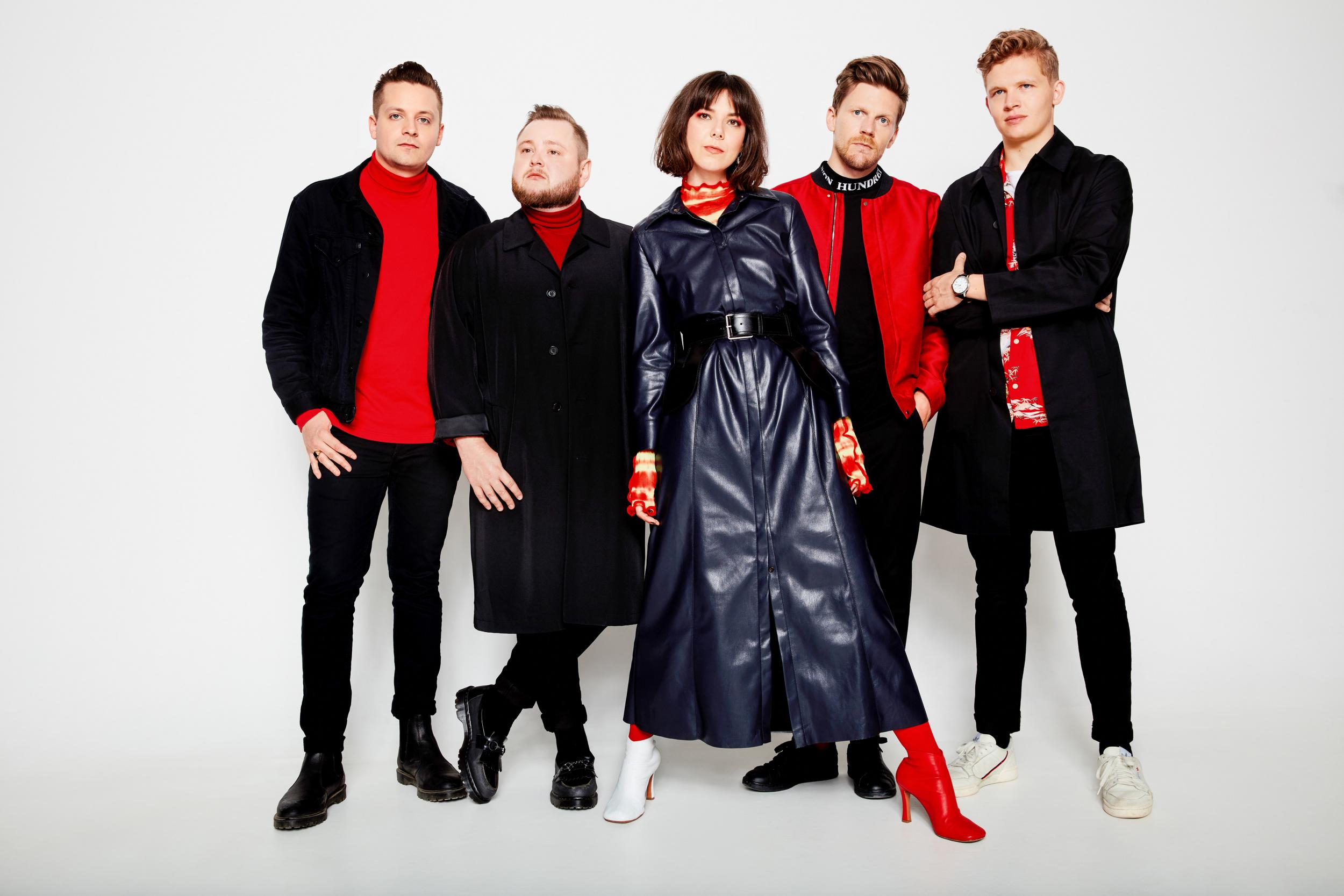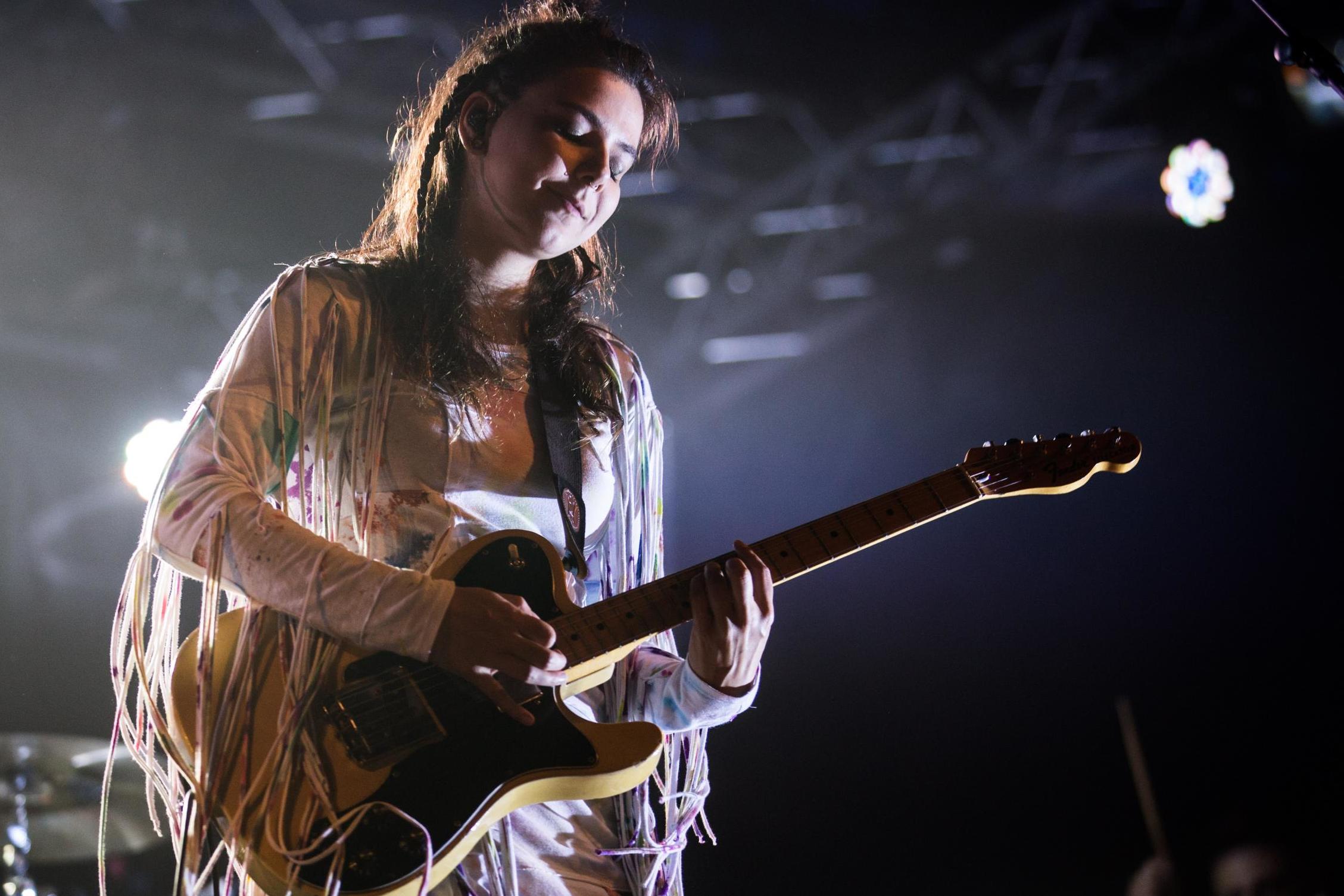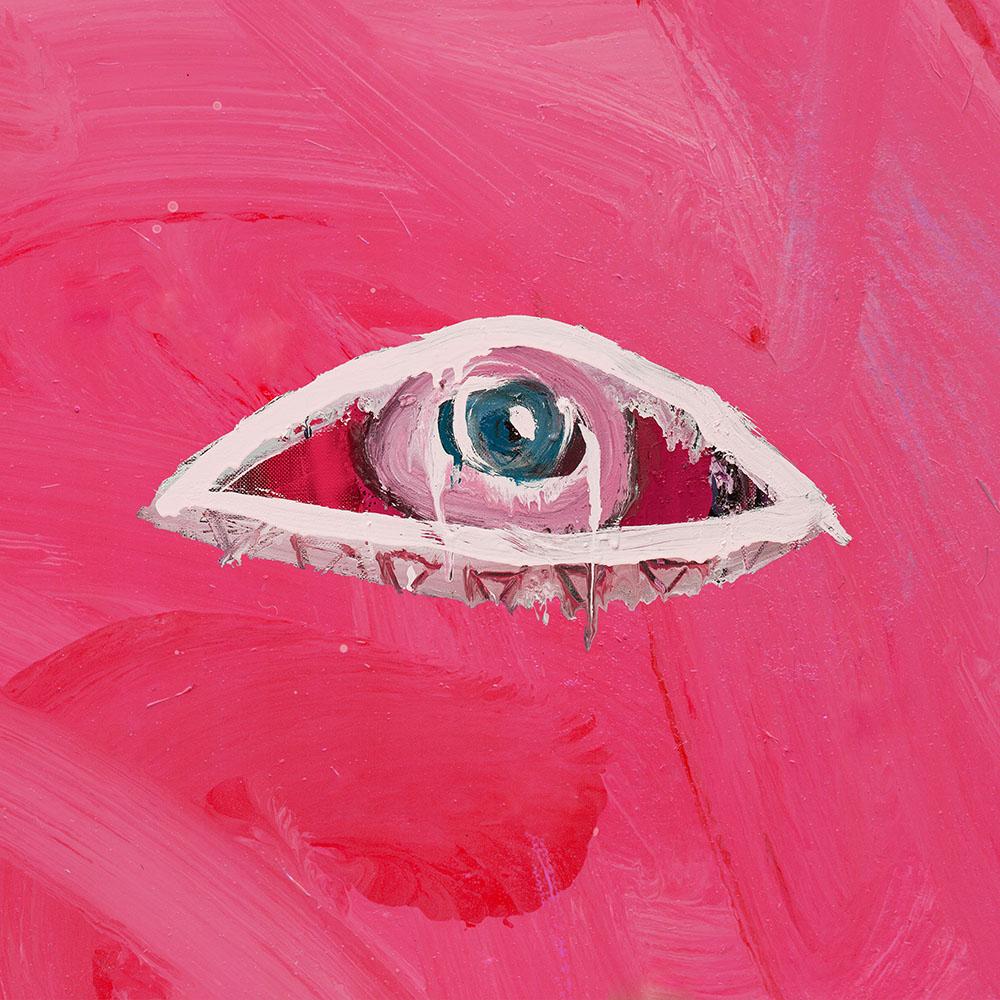Of Monsters and Men interview: ‘She’s called Lola. She’s possessed, and she’s been f***ing with us’
Suze Olbrich travels to Reykjavik to enter the strange world of Nanna Bryndis Hilmarsdóttir and Ragnar Þorhallsson and finds a band who have changed their sound for their kaleidoscopic third album ‘Fever Dream’

Your support helps us to tell the story
From reproductive rights to climate change to Big Tech, The Independent is on the ground when the story is developing. Whether it's investigating the financials of Elon Musk's pro-Trump PAC or producing our latest documentary, 'The A Word', which shines a light on the American women fighting for reproductive rights, we know how important it is to parse out the facts from the messaging.
At such a critical moment in US history, we need reporters on the ground. Your donation allows us to keep sending journalists to speak to both sides of the story.
The Independent is trusted by Americans across the entire political spectrum. And unlike many other quality news outlets, we choose not to lock Americans out of our reporting and analysis with paywalls. We believe quality journalism should be available to everyone, paid for by those who can afford it.
Your support makes all the difference.As I shuffle out of the airport terminal in Iceland, the boundless horizon is a wake-up call. Who knew there was this much sky? Trundling across moss-dotted, ancient lava plains en route to Reykjavik, my under-slept mind reaches for scraps of Nordic folklore: elves, dwarves; the harrowing, troll sex scene from Swedish fantasy film Border… then we pass Taco Bell, and I’m back in reality… until the bus sweeps by a coastal inlet and time halts as inky mist-veiled mountains rise from the ocean. No wonder this sublime landscape seeps into the sound of every musician hailing from Europe’s northernmost nation.
Of Monsters and Men are no exception. The first Icelandic band to breach one billion Spotify plays, the five-piece litter their first two albums, My Head is an Animal (2011) and Beneath the Skin (2015), with talking trees, mountain sounds, running wolves, heavy stones and vengeful seas as well as spectral brethren – your howling ghouls and so on. Within an hour of reaching Reykjavik, I’m headed back out of town to meet Nanna Bryndis Hilmarsdóttir and Ragnar (Raggi) Þorhallsson, the group’s lead songwriters and vocalists, to discuss their kaleidoscopic third record, Fever Dream. Ten minutes later, the bemused taxi driver pulls up in front of a nondescript, two-storey building. Briefly stunned by the intensity of the light, I perch on a springy verge, detoxing London lungs with pristine air, before poking my head through an open door to see flight cases lining a corridor.
Nanna appears. She’s a tall, striking figure, insouciant, dressed head to toe in black, bar the bold, white graphics hand-painted onto her artisan jeans. She leads me into the band’s home-away-from-home. Turns out the building, which Of Monsters and Men have built up from a barren rehearsal space into a high-end recording studio over six years, used to be a school. Several artists share the floor above. It gets pretty lively, apparently. We enter what used to be a teen hang-out room to see Raggi, looking like an off-duty pop producer in a loose-fitting, blue jacket tending to a gurgling coffee machine. His aunt attended this school. Unfortunately, the whole building might soon be torn down. Neither seems fazed, maybe because they’re keen to move wholesale into “pure countryside” – or perhaps they just bury feelings deep here.
The band’s whiplash-inducing rise kicked off in 2011 with the runaway success of jangly, ear-burrowing anthem “Little Talks”. Since then their rousing, stadium-friendly blend of folk, rock and pop has seen them pack out everything from toilet venues to concert halls, including key stages at the likes of Coachella and Glastonbury. They even cameoed in two episodes of series six of Game of Thrones. Those stacks of kit in the hall have freshly arrived from New York, where, styled out in red and black, they performed Fever Dream’s major hit single, “Alligator” – a rampant banger about self-empowerment – live on The Tonight Show Starring Jimmy Fallon. Still, while they take their work crazy seriously... the attendant fuss and even themselves? Not so much.
“That could be a bit Icelandic,” says Nanna, “Like: ‘Moving on – what’s next?’ We’ve also always wanted to underplay it a little.” Raggi continues: “It is weird being successful in Iceland. Everyone’s so equal here that you never think you’re bigger than anyone else. If you meet someone famous, they’re your equal, which is good, it’s healthy.”
Nanna: “It gives you space…”
Raggi: “… to just be yourself.”
After 10 years of being bandmates, it’s hardly a shock their sentences frequently intertwine. With the high summer sun beaming through the window, the pair prove to be great company as they reveal how the dynamic, tour de force that is Fever Dream came to be. At the start, all they knew was that they wanted to do everything differently.

Their first step was to strip out every well-worn, music-making habit, which included workshopping each song live in their rehearsal space with lead guitarist Brynjar Leifsson, bassist Kristján Páll Kristjánsson, and drummer (and occasional songwriter) Arnar Rósenkranz Hilmarsson. Instead, they embraced writing solo on computers. To fulfil this, everyone had to let go of both their regular instruments and egos. “You’re always trying to build on what you’ve done, but [this time] we felt freer mentally, and at ease with taking every song where it wanted to go,” says Raggi, “because we eliminated our roles. [Before] I’d have an acoustic guitar that I’d just play on every track. This time, we weren’t afraid of not appearing on a song at all. I did nothing on “Waiting for the Snow”, and I’m fine with that. But, on the last album, it would have been like: ‘Why am I not in it?’”
“It’s an album that we really had to grow into,” says Nanna, of shaping the LP. “When you’re [undergoing] those spurts, it’s intense and hard, but it’s so nice coming out of it with something in your hands, like: ‘Oh – that was worth it.’” What with all that blood, sweat and self-improvement, Fever Dream sounds like it must be heavy going. Thankfully, from defiant, sun-dappled, just-released single “Wild Roses”, through the tender, atypically spacious “Waiting for Snow”, on to the out-and-out Eighties soft rock of “Wars” and the purposefully overblown, self-professed aural “trash can” that is “Under the Dome” – it’s anything but. Of Monsters and Men were determined that no matter how dark the topic – the inevitability of death, for example – the sound was to stay light, fun and open. In Nanna’s words: “You can make a really sad ballad, but if it sounds bright then it won’t pull you down.”

Even for an avowedly democratic band, tearing up trusted, communal creative methods led to dead ends as well as breakthroughs. “Previously, we hadn’t formed song ideas much before everyone jammed on them, so it was a struggle for everyone to find their roles in the new dynamic,” says Raggi. “The way we changed things suited us and Arnar as writers, but for Kristján and Brynjar, who are very instrumental to the process, it was more of an adjustment. We had long discussions about how to play [sessions], then everyone adjusted. Kristjan set up the whole studio too, so we learnt a lot from that.” They also continued their partnership with Beneath the Skin’s producer, Rich Costey (Sigur Rós, Muse, At The Drive-In), who had the knack of guiding the overly diplomatic group into making decisions. “He did a great job. He’s confrontational and we needed that – a lot. He’s a talented mixer as well. He just made everything work.”
Enjoy unlimited access to 100 million ad-free songs and podcasts with Amazon Music
Sign up now for a 4 month free trial (3 months for non-Prime members)
Enjoy unlimited access to 100 million ad-free songs and podcasts with Amazon Music
Sign up now for a 4 month free trial (3 months for non-Prime members)
At least writing solo “felt natural” right away. On their previous two albums, lyricists Nanna and Raggi joined forces to cloak personal inspirations in the fantastical, folk imagery the band is renowned for (see: wolves and ghouls). But over the many months they spent sculpting the pool of songs that would make up Fever Dream in their respective home studios, their singular voices were able to flow direct from their subconscious. “When you’re writing a song, you’re not filtering yourself,” says Nanna. “I’m more honest in my lyrics than I am when speaking to people, but it feels [veiled] – like you can say anything and people will find their own meaning rather than thinking about what I’m going through … I was also more comfortable going to [a gendered space]. If you’re a woman, then you always write from that perspective, but I liked using imagery that was very feminine: roses, wildflowers and sunlight – language that was soft, vulnerable and yearning.”

Simultaneously, Raggi had to expand his conception of his masculinity so that he could fully own his lyrics. Despite having written the exposing, Whitney Houston-influenced, mortality-themed ballad “Stuck in Gravity” from the gut, he’d intended that Nanna perform it: “I felt it was super feminine. And she said, ‘Just sing it’. I’m not used to singing ballads so that was a good step.” A further step for the entire band came in the guise of “Ahay”, a woozy, school-prom-primed ballad that wouldn’t feel out of place on a Backstreet Boys compilation: “It’s so pop. It’s stuff that I write a lot, but it’s never what the guys like,” admits Raggi. “The lyrics are cheesy, and that’s kind of what we liked about it. That aspect of the album surprised me the most, because with the second album, we wanted to be cool.”
Sidelining instruments lured them into novel terrain, too. “I hadn’t written on a laptop before, but right away with this record, every song went directly onto the computer. I found it very creative as there were no limitations – just, what’s going to inspire me? You can make a rhythm, or loop or sample anything … I can use my voice as an instrument: layer it, chop it up… Sampling [is also] something that we lead the album with. It felt interesting,” says Nanna, who was particularly influenced by Solange’s vocal production on Seat at the Table. Weren’t they worried what fans used to acoustic guitars front-and-centre would think about Fever Dream’s digital landscape? Not once, according to Nanna: “We’ve had those conversations in the past, like: ‘Is this us?’ But it’s always going to be us. It’s a misconception that you can’t venture into different places…”
Having evolved their sound, they’re itching to get out and share it with audiences across Europe and the USA this autumn, and so their summer will be spent here rehearsing. “Because of how we recorded, we’re better at everything, except playing together,” says Raggi. “We want to spend time getting the live show right, so we can put on a really great show.” As he kindly calls me a car, Nanna shows me round their instrument-laden, recording space. My eye alights on a creepy, disembodied baby doll head. “She’s called Lola. She’s possessed, and she’s been f***ing with us. We had all these cases with guitars in them on tour and they all got flooded. A lot of our guitars were ruined, but the ones she was travelling with didn’t. I’m afraid of what will happen if I get rid of her … Then the other day we were in the countryside, and there was this doll museum. There was nobody around, you just walked into this house and there were all these dolls…” She stops, as though Lola may be listening. “I’m talking about the plan right in front of her.” Raggi joins us, agreeing that’s not smart. Reverting to earthly topics, they point me to their favourite, harbourside restaurant in Reykjavik: The Coocoo’s Nest... and admit they’re ditching school to spend the rest of their afternoon drinking beers in that spellbinding light.
Fever Dream is out on Friday 26 July. The tour the UK from 24 October
Join our commenting forum
Join thought-provoking conversations, follow other Independent readers and see their replies
Comments